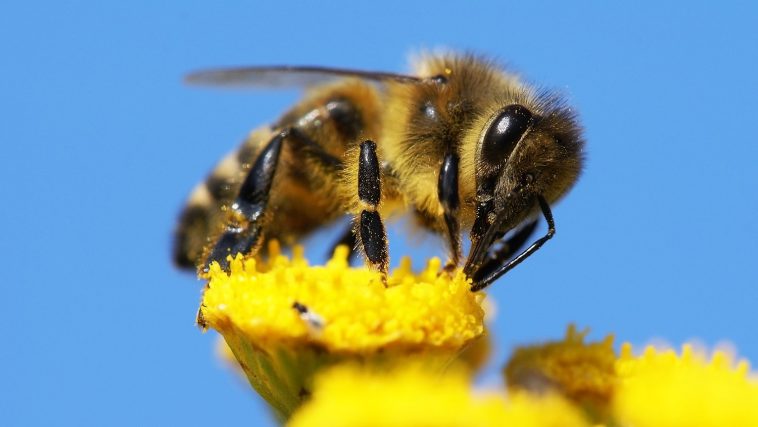When I want to communicate with my wife about where a certain store or restaurant is, I can easily tell her or give her the address so that she can use her cell phone to show her the location. But what about other animals that don’t have the capacity for verbal communication?
God has solved this problem for the honeybees by creating them with the ability to use what we call the “waggle dance.”
When a female worker honeybee finds a food source, maybe a crabapple tree in full blossom, she gathers as much pollen and nectar as she can and brings this food back to the hive. She then does the famous waggle dance to tell the other bees where the crabapple tree is, including both direction and distance. What is remarkable is that bees have only 950,000 neurons in their brains, compared to humans, with about 85 billion. The brains of honeybees are extremely tiny, 1 cubic millimeter in size. Honeybees have brains only about half the size of bumble bee brains, yet they have more complex behaviors than bumblebees.
Even though much study has been done on the waggle dance, some of the details are still a mystery. Here is what we have been able to learn.
- Adult bees are instinctively able to both perform the waggle dance and interpret its meaning.
- Electrophysiological changes in brain neurons are evident at the start of this behavior.
- The waggle dance communicates navigation information.
- The waggle dance is when a bee with food source information to share shakes its body at a rate of about fifteen times per second making the movement of a figure eight.
- Where the bee is facing during the dance conveys the direction of the food source.
- The bee’s body position during the dance is relative to the vertical direction on the honeycomb wall in the hive.
- The position of the bee during the dance gives the angle of the food source relative to the sun. If the direction of the food source is toward the sun, the dance position is vertical. If the direction is forty degrees clockwise from the sun, the dance position is forty degrees clockwise (or right) of vertical.
- The distance of the food source is communicated by the duration of the dance, where one figure eight turn tells of a distance of five to fifty yards.
Researchers still don’t know how distance is calculated. Basically, the waggle dance tells other worker bees the direction and distance of the food source discovered. We know that the position of the bee performing the dance changes as the sun moves across the sky. So if another bee discovers a food source in the same direction as that crabapple tree but at a different time of day, the bee will compensate by adjusting the position of its body accordingly.
For the size of the bee and its tiny brain, this dance is a complex way of communication. It starts with a worker bee finding a food source and then being able to figure out the distance and direction based on the location of the hive. This information is then communicated with the other worker bees via the dance. The other worker bees must then interpret the dance to get an adequate “picture” of what direction and distance the food source is.
Evolution can’t explain how a bee with such a small brain can communicate through this waggle dance and then have other bees interpret its meaning. Only an all-powerful, all-knowing Creator God could do this.
Great is our Lord, and abundant in power; his understanding is beyond measure. Psalms 147:5






